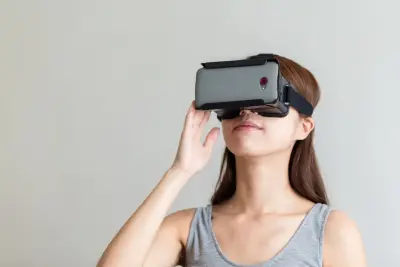The combined Virtual Reality (VR) and Augmented Reality (AR) markets are projected to generate around $150 billion dollars a year by 2020, according to a forecast by Digi-Capital. How can brands make the most of this opportunity?
The projected market size represents a massive increase over the current combined revenue of AR and VR (around $4 billion) which is currently driven by the likes of brands like Oculus Rift, Google Cardboard and Samsung’s VR Gear. Though AR and VR are terms that have been bandied about for some time, for the sake of this article I’ll include a quick summary of what differentiates the two technologies. Both AR and VR rely on computer-generated images for their experiences, however what separates the two is the level of immersion. AR typically adds a layer of CGI to enhance the user’s existing surroundings, whereas VR relies on CGI to create an immersive reality that surrounds the user. As more players enter the market and drive innovation, more consumers will be interested in incorporating these futuristic interfaces into daily life. For brands and marketers alike the opportunities to engage with consumers and tell a unique brand story are endless.
THE TIME IS RIGHT FOR LUXURY BRANDS TO UT SOME SKIN IN THE VR/AR GAME
Premium Retail brands, from specialty to department, should consider leveraging the power of virtual showrooms. With this approach shoppers can peruse products and experience the assortment, all from the confines of wherever the brand wants to set up shop.Take Audi’s recently announced update to their popular virtual showroom, for instance. Leveraging the technologies of Oculus and HTC, Audi car shoppers can now explore the entire vehicle range through a vividly detailed and immersive VR experience in which they can “build” and examine configurations of every Audi model in a range of environments.
While virtual showrooms are not necessarily a groundbreaking move, the benefits can be substantial. For example, after one of Audi’s London dealerships transitioned to a “completely digital showroom” in which customers could digitally customize a potential vehicle, sales at that particular location increased by 70%. Audi, like other brands, has good cause to bank on VR’s potential. For hospitality, tourism and real estate brands, showcasing properties and giving potential visitors a chance to virtually explore their surroundings prior to making an investment – whether in the form of a purchase, rental or trip taking a trip – is an appealing experience for consumers. A highly engaging VR tour could help guide consumers toward booking a trip, assuage any anxieties about a particular rental property location, and even help condo brands connect with the much sought-after (and technologically-driven) millennial consumer as they age into home-purchasing range.
CONSIDER THE BIZZ THAT COULD BE GENERATED BY HAVING A RELEVANT INFLUENCER DELIVER A CUSTOM TOUR OF PROPERTY
But the conversation doesn’t begin and end with VR. Despite the public failing of Google’s Glass, Augmented Reality has been making its case for consumer adoption, and Microsoft’s Hololens is poised to take up the mantle. Rather than an always-on accessory, the Hololens is specifically designed to seamlessly integrate into users’ entertainment, creative output and connected home. Brands ranging from appliance and home theater manufacturers to furniture and bedding producers need to be ready to integrate into this new frontier of home-based AR. VR and AR, which at one point seemed like a science-fiction pipe dream, are rapidly becoming mainstream and adopted by consumers from all walks of life. Brands must be ready to capitalize on this shift and use these platforms to connect with their consumers, lest they lose out to their competitors who are willing and able to innovate.
